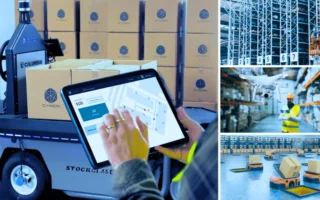You know the feeling. You’re spending hours on WhatsApp answering the same questions while new leads go cold. Then, your best sales channel has become your biggest bottleneck. It’s a common story for growing businesses: the personal touch that makes WhatsApp great is also what makes it hard to scale.
Most guides just throw a list of vendors at you. This one is different. It’s a way to think through the problem so you can find the right tool for your business. It all starts with your strategy, not a pricing plan. Finding the right WhatsApp automation tool means understanding what your business actually needs first.
First, define your mission: what problem are you really solving?
Before you look at software, you need a clear mission. What is the single biggest result you need from this investment? Are you drowning in support tickets, or are you focused on driving revenue? Your answer will quickly narrow your options and point you toward a solution built for that primary goal.
The efficiency engine: are you scaling customer support?
If your team is buried under questions about order status, hours, or product details, your mission is efficiency. You need to answer people faster and handle more conversations without doubling your staff. Good automation lets your current team get more done without burning out.
To do this, you’ll need a tool that’s good at creating smart chat flows. Think of chatbots that handle the easy, repetitive questions on their own. This frees up your agents to solve the tricky problems that require a real person. Features like smart routing are key, automatically sending conversations to the right department. A sales lead goes to sales, a tech question goes to support, and customers get answers faster.
For businesses using specific platforms to manage customers, finding a tool that connects smoothly is a big plus. Sending a broadcast message in whatsapp is a great way to send updates to specific customer groups, a task often handled inside these connected systems.
The growth machine: are you driving sales and marketing?
If your goal is to bring in more revenue, your mission is growth. You need a tool built to find, qualify, and convert leads. The focus shifts from managing incoming questions to proactively starting conversations that lead to a sale. Here, automation becomes a core part of your sales process.
A tool focused on growth should help you manage campaigns and nurture leads. This means setting up automated messages that qualify new prospects, send follow-ups, and even schedule demos. It should also help you recover lost sales by sending a quick, personal reminder to customers who left items in their cart. These small, timely interactions can make a huge difference in your conversion rates.
The core decision: choose your operational model, not just a tool
Once your mission is clear, the next step is to see how a new tool will fit into your company’s daily operations. This isn’t just a technical choice; it’s about how your team works. Will a new platform become your central hub, or will it act as an extension of the software your team already uses?
The “all-in-one hub” model: platforms that centralize communication
The all-in-one model is for businesses tired of juggling different communication apps. If your team jumps between social media DMs, live chat, and email, you’re losing track of conversations. These platforms fix that by pulling every message from every channel into a single, shared inbox.
This approach is perfect if your main goal is to bring order to the chaos. When you can see a customer’s entire history in one place, your team has the context to provide better service. You’re essentially betting on one platform to be your command center for communication. This makes work much simpler, but you need to be sure the platform can grow with you.
The “integrated specialist” model: a WhatsApp automation tool to supercharge your existing stack
The integrated specialist model is for companies that already have their core software in place. If your team works all day in a specific CRM or e-commerce platform like Salesforce or Shopify, this is your best bet. These tools don’t try to replace your main system; they add WhatsApp into your existing workflow.
How well this works depends entirely on the integration. A good specialist tool feels like it’s already part of your main platform. You can set up automations based on the data you already have, like sending a WhatsApp message when a deal status changes in your CRM or when a customer makes a repeat purchase. This approach makes the tools you already pay for even more valuable.
Your next move: a blueprint for the right choice
So, how do you move forward? The search for the right WhatsApp automation tool comes down to your operational strategy. Forget the long feature lists for a minute and focus on the two decisions that matter. First, what’s your mission? Are you building an “Efficiency Engine” for support or a “Growth Machine” for sales?
Second, what’s your operational model? Do you need an “All-in-One Hub” to centralize your communication, or an “Integrated Specialist” to improve the tools you already use? The right tool is the one that fits how your team works. Before you book a demo, just look at the browser tabs your team has open. That will tell you which path to take.




